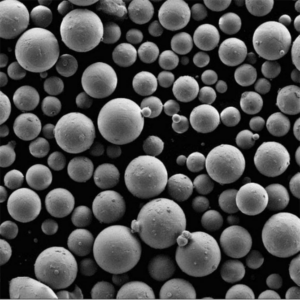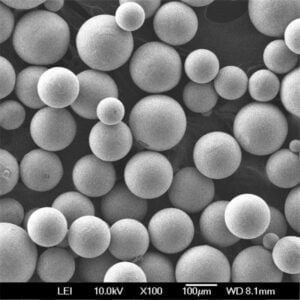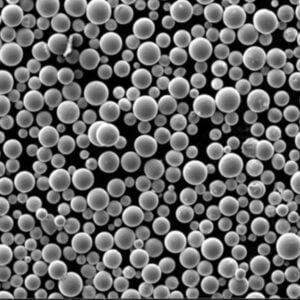
Nichrome Powder: Powerful Heat Resistance for Industrial Mastery
Low MOQ
Provide low minimum order quantity to meet different needs.
OEM & ODM
Provide customized products and design services to meet unique customer needs.
Adequate Stock
Ensure fast order processing and provide reliable and efficient service.
Customer Satisfaction
Provide high quality products with customer satisfaction at the core.
share this article
Table of Contents
Nichrome powder. If you’re in the business of industrial coatings, heating elements, or additive manufacturing, you’ve likely come across this versatile material. But what exactly makes Nichrome powder so special? Why is it such a popular choice for various high-temperature and corrosive environments?
In this comprehensive guide, we’re going to dive deep into Nichrome powder—its composition, properties, uses, and more. We’ll break down the technical details in a way that’s easy to understand, even if you’re not a materials scientist. Plus, we’ll cover where you can buy Nichrome powder, what it costs, and how it compares to other nickel-based alloys.
So, whether you’re an engineer, a purchaser, or just plain curious, this article has everything you need to know.
Overview
Nichrome powder is a nickel-chromium alloy that’s widely known for its high resistance to heat and oxidation. The name “Nichrome” comes from the two main elements that make up the alloy: Nickel (Ni) and Chromium (Cr). This powder is often used in thermal spraying, additive manufacturing, and heating elements because of its ability to maintain its properties even at high temperatures.
But what sets Nichrome powder apart from other materials? First of all, Nichrome’s oxidation resistance makes it ideal for environments where other metals might degrade. Secondly, its high melting point means it can withstand extreme heat without losing its integrity. Plus, it’s ductile, meaning it can be easily shaped or processed into various forms.
Key Benefits
- Highly resistant to oxidation and corrosion, even in harsh environments.
- Excellent high-temperature performance, with a melting point of around 1,400°C.
- Ductile and easy to process, making it ideal for additive manufacturing and thermal spray coatings.
- Widely available from a variety of suppliers, ensuring competitive pricing.
Now, let’s move on to the details of Nichrome powder’s composition and properties.
Nichrome Powder Composition and Properties
Nichrome powder is primarily made up of nickel and chromium, but there are other elements involved that enhance its performance in specific applications. The most common grades of Nichrome powder are Nichrome 80/20 and Nichrome 60/15, which refer to the percentage of nickel to chromium.
Detailed Composition
| Element | Nichrome 80/20 (%) | Nichrome 60/15 (%) | Function |
|---|---|---|---|
| Nickel (Ni) | 75 – 80% | 55 – 60% | Provides ductility, corrosion resistance, and high-temperature strength. |
| Chromium (Cr) | 15 – 20% | 10 – 15% | Adds oxidation resistance and improves high-temperature performance. |
| Iron (Fe) | 1 – 4% | 1 – 5% | Increases strength and stiffness, especially in high-stress applications. |
| Silicon (Si) | 0.5 – 1% | 0.5 – 1% | Improves oxidation resistance and helps with processing. |
| Manganese (Mn) | ~0.1% | ~0.1% | Aids in deoxidation during manufacturing. |
Key Properties
| Property | Value/Description |
|---|---|
| Melting Point | 1,350°C – 1,450°C |
| Density | 8.4 g/cm³ |
| Electrical Resistivity | 1.10 – 1.30 µΩ·m |
| Oxidation Resistance | Excellent, especially in environments up to 1,200°C. |
| Thermal Conductivity | 11.3 W/m·K (at 20°C) |
| Corrosion Resistance | High in oxidizing atmospheres but not suitable for reducing environments. |
| Ductility | Easily processed into wires, strips, or powders for various applications. |
Why Nichrome Powder Stands Out
So, why choose Nichrome powder over other materials? Its combination of ductility, high-temperature resistance, and oxidation resistance makes it a go-to material for industries that need components to survive in extreme conditions. Whether you’re dealing with thermal spray coatings or additive manufacturing, Nichrome powder offers the reliability you need.
Nichrome Powder Applications
Nichrome powder’s unique resistance to heat and oxidation makes it indispensable in a wide range of industries. From aerospace to electronics, Nichrome plays a key role in enabling high-performance applications.
Common Nichrome Powder Applications
| Industry | Typical Applications |
|---|---|
| Aerospace | Used in thermal barrier coatings and engine components for high-temperature environments. |
| Electronics | Forms resistors and heating elements in devices that require consistent heat output. |
| Additive Manufacturing | Used in 3D printing of high-temperature parts for automotive and aerospace. |
| Power Generation | Coating of turbine blades, boilers, and heat exchangers to enhance oxidation resistance. |
| Medical Equipment | Used in the production of heating elements in laboratory equipment and sterilization tools. |
| Glass Manufacturing | Used as heating coils in glass tempering and annealing furnaces. |
Why Nichrome is Popular in Heating Elements
Nichrome is the most common material used in heating elements. Why? Its high electrical resistivity combined with its oxidation resistance allows it to withstand continuous heating and cooling cycles. Whether it’s in a toaster, a furnace, or an industrial heater, Nichrome maintains its properties over time, even under extreme conditions.
Specifications, Sizes, and Standards for Nichrome Powder
When working with Nichrome powder, it’s important to choose the right specifications and grades for your application. Different particle sizes, grades, and purity levels can affect the performance of the powder, especially in thermal spray coatings and additive manufacturing.
Specifications and Standards
| Specification/Standard | Details |
|---|---|
| UNS Number | N06600 (for Nichrome 80/20) |
| ISO Standards | ISO 14919:2015 for thermal spraying powders |
| Melting Point | 1,350°C – 1,450°C |
| Particle Size | Available in 15 to 45 microns (fine powders) and 45 to 150 microns (coarse powders). |
| Purity | 99.5% or higher for high-end applications like additive manufacturing. |
| Electrical Resistivity | 1.10 – 1.30 µΩ·m |
Available Forms and Sizes
Nichrome powder is available in various forms to suit different thermal spray and additive manufacturing techniques. Here are the most common forms and sizes:
| Form | Available Sizes |
|---|---|
| Powder | Particle sizes typically range from 15 to 150 microns, depending on the application. |
| Wire | Available in wire form for use in heating elements and thermal spray applications. |
| Rod | Used in hard-facing and thermal spray applications. |
Nichrome Powder Price and Suppliers
Pricing for Nichrome powder can vary based on several factors, including particle size, purity, and supplier reputation. In this section, we’ll provide an overview of pricing trends and some of the top suppliers you can turn to for purchasing Nichrome powder.
Nichrome Powder Suppliers and Pricing
| Supplier | Price Range (per kg) | Notes |
|---|---|---|
| Praxair | $200 – $350 | Known for high-quality thermal spray powders for aerospace and electronics industries. |
| Oerlikon Metco | $250 – $400 | Offers a wide range of Nichrome powders for both thermal spraying and additive manufacturing. |
| Höganäs AB | $220 – $370 | Specializes in metal powders for surface engineering and additive manufacturing. |
| Kennametal | $210 – $360 | Provides Nichrome powders for industrial heating elements and thermal spraying. |
| Wall Colmonoy | $230 – $380 | Supplies a variety of nickel-based alloy powders, including Nichrome for high-temperature coatings. |
Factors that Affect the Price
The price of Nichrome powder can vary based on several factors:
- Particle Size: Finer powders often cost more due to the additional processing required.
- Supplier Reputation: Established suppliers with strict quality controls may charge more.
- Purity Level: Higher purity powders are more expensive, especially for additive manufacturing applications.
- Bulk Purchases: Buying in bulk often results in discounted rates.
On average, Nichrome powder costs between $200 and $400 per kilogram, depending on the form and supplier.
Advantages and Limitations
Like any material, Nichrome powder has its pros and cons. Understanding these can help you decide whether it’s the right material for your specific application.
Advantages
| Advantage | Description |
|---|---|
| High Oxidation Resistance: Performs well in oxidizing environments. | Ideal for thermal spray coatings, heating elements, and high-temperature applications. |
| Consistent Electrical Resistivity: Maintains steady resistivity even at high temperatures. | Perfect for heating elements in industrial and consumer products. |
| Ductility: Easily processed into wires, powders, or strips. | Suitable for additive manufacturing and thermal spraying. |
| High Melting Point: Can withstand extreme heat without degrading. | Widely used in aerospace and power generation industries. |
| Corrosion Resistant: Performs well in oxidizing atmospheres and chemical environments. | Long-lasting in harsh conditions like furnaces and turbine blades. |
Limitations
| Limitation | Description |
|---|---|
| Not Suitable for Reducing Environments: Loses oxidation resistance in reducing atmospheres. | Consider other materials like Inconel for such environments. |
| Relatively Expensive: Nichrome powder tends to be pricier compared to other metal powders. | May not be cost-effective for low-budget projects. |
| Lower Conductivity: While good for heating elements, its thermal conductivity is lower compared to some other alloys. | Not ideal for applications requiring efficient heat conduction. |
Nichrome Powder vs. Other Nickel-Based Powders
When selecting a nickel-based powder for your project, it’s important to compare Nichrome powder to other options. Let’s see how it stacks up against other popular nickel-based powders, like Inconel and NiCrPSi.
Comparing Nichrome Powder to Other Nickel-Based Powders
| Alloy | Strengths | Limitations |
|---|---|---|
| Nichrome | Excellent for oxidation resistance and heating elements. | Not suitable for reducing environments. |
| Inconel 625 | Superior high-temperature performance and corrosion resistance. | More expensive and less resistive than Nichrome. |
| NiCrPSi Powder | Higher wear resistance and flowability. | Higher melting point, making it less suitable for general heating elements. |
| Hastelloy C-276 | Excellent in corrosive environments like acidic and chloride-rich environments. | Significantly more expensive and lacks electrical resistivity for heating elements. |
It offers a balanced mix of oxidation resistance, high-temperature stability, and electrical resistivity, making it a go-to material for heating elements and thermal sprays. However, if you’re working in extreme corrosive environments or require superior strength at high temperatures, alternatives like Inconel or Hastelloy might be better suited.
Frequently Asked Questions (FAQs)
Still have questions about Nichrome powder? Let’s answer some of the most commonly asked questions to clear things up.
| Question | Answer |
|---|---|
| What is Nichrome powder used for? | It is commonly used in heating elements, thermal spraying, and additive manufacturing. |
| What is the melting point of Nichrome powder? | The melting point of Nichrome powder is between 1,350°C and 1,450°C, depending on the specific grade. |
| How much does Nichrome powder cost? | Prices typically range from $200 to $400 per kilogram, depending on the supplier and particle size. |
| Can Nichrome powder be used for additive manufacturing? | Yes, it is widely used in 3D printing and additive manufacturing for high-temperature parts. |
| What industries commonly use Nichrome powder? | Aerospace, electronics, power generation, and medical equipment industries are among the biggest users of Nichrome powder. |
| How does Nichrome compare to Inconel? | Nichrome offers better electrical resistivity for heating elements, while Inconel excels in high-temperature and corrosive environments. |
Conclusion: Why Nichrome Powder is Essential for High-Temperature Applications
In conclusion, it is a versatile, high-performance material that offers exceptional oxidation resistance, high-temperature stability, and electrical resistivity. Its unique properties make it indispensable for heating elements, thermal spray coatings, and additive manufacturing.
While it may come with a higher price tag compared to some other metal powders, the durability and reliability it provides make it well worth the investment for critical applications. Whether you’re coating turbine blades, manufacturing heating coils, or 3D printing high-performance parts, it delivers the performance you need.
Considering all its benefits, Nichrome powder remains one of the best choices for high-temperature and oxidation-resistant coatings in a wide range of industries.
So, if you’re looking for a material that can handle the heat—literally—it is your answer.
Get Latest Price
About Met3DP
Product Category
HOT SALE
CONTACT US
Any questions? Send us message now! We’ll serve your request with a whole team after receiving your message.

Metal Powders for 3D Printing and Additive Manufacturing
COMPANY
PRODUCT
cONTACT INFO
- Qingdao City, Shandong, China
- [email protected]
- [email protected]
- +86 19116340731








